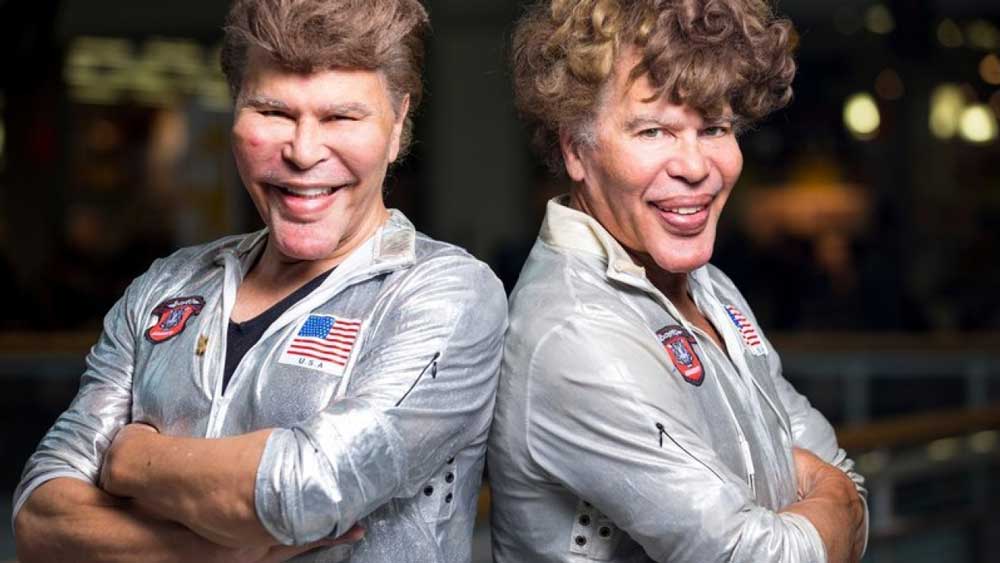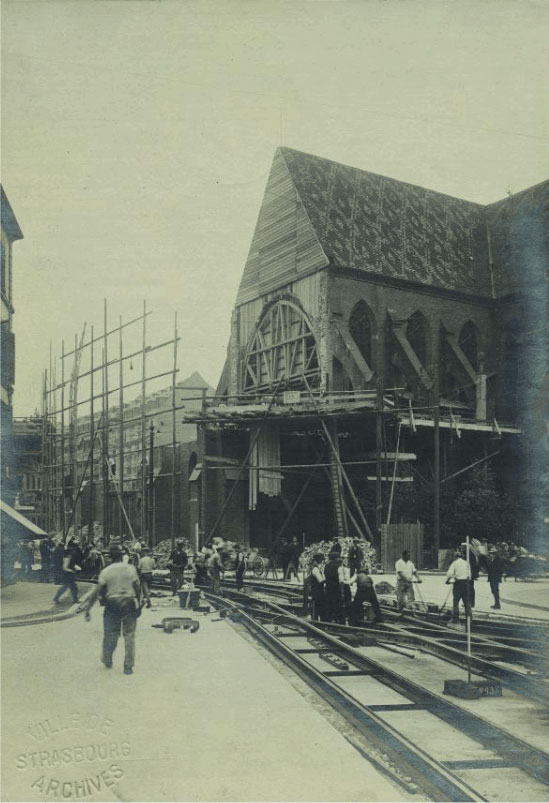The Great Breakthrough
– part 1: In the beginning there was God
August 14th 2020, by Matthias
It’s been a while since I last tapped something on Open Office (is it still publicity when the product is an open source freeware?) and today, we shall outline a gigantic urban planning project: the Grande Percée, that one might translate as the Great Breakthrough. This is one of the most ambitious projects our wonderful city has known; so great that the adjective is part of its name. But then, where to begin?
In the beginning, there was nothing, then boom, here comes space and time, in which one finds matter and energy, then thirteen billions and seven hundred millions years later, in late 19th century, Strasbourg changes hands and goes to the Prussians. And it so happens there was in here a little bit too much matter and not enough space. We are thus trying to give the city a brand new identity. A new face, new districts (a new city! the Neustadt), a new look, a new architecture, a new language, new streets, all this in line with the new project. Given this is Alsace we’re talking about, the project will be carried out and modified successively by the Germans and by the French, spanning over nearly 60 years.
These visionaries will bring the medieval town into modern times. It goes without saying that there were a few hurdles along the way. Paint-jobs and wrecking ball-powered face-lifts are to the program.
The Germans start with the construction of the train station we know today, then they wish to join the latter both to downtown Strasbourg and to the Austerlitz port. The problem is that Strasbourg has kept its medieval houses. Those are really close to one another and leave only tiny spaces for the circulation of air and passersby. The hygienist theories popular at the time will literally come and give some fresh air to this unhealthy downtown area, thanks to a large street (and as required by modernity, it is a shopping one). Here, not only can the air move around, but also the tramway.
In a straight line from the train station, we cross the Kuss bridge and enter the Great Island. We get onto the Saint-Peter-the-Old square and this is where “Operation Makeover” begins.
Saint-Pierre-le-Vieux, Saint-Peter-the-Old! Talking about face-lifts, we’re here on a Bogdanoff-level.
Coming back to our Peters, you may know we have two of them in Strasbourg, a Young one and an Old one! Even more: this stone brotherhood is, in fact, made up of four brothers. The two Young ones have both gone their separate ways. We indeed have two religious buildings called Saint-Peter-the-Young: one catholic (near the judicial tribunal) and the other protestant (near the Sofitel Grande Île hotel).
However, the Old ones are Siamese brothers and, by definition, inseparable. The one and only Saint-Peter-the-Old building thus houses two churches (the catholic entrance is in rue du 22 novembre and the protestant entrance is in Grand Rue). It is true though that a small family feud came to pass between them, materialized by a wall that you can still see today (yes, such interventions leave a trace). Yet they remain stuck to one another. One is admittedly more liberal than the other, but they are not so different that they would cast a different vote in the end.
To know what this Pierre family’s history is all about, you will have to join our Petite France Free Tour (and don’t you forget your travel attestation of course). Feel free to ask the guide for stops and histories that are of interest to you during our guided tours.
Back to today’s business: here is the start of the Great Breakthrough. Remember, we were talking about Saint-Peter-the-Old’s operation. I can now specify which one of the two I’m talking about: the catholic one.
You may have noticed the differences in style, materials, colors and bell towers on that building. Now, the orange brickwork part (on the left hand side on the picture), this is the catholic part. This is the one that will pay the price of modernity and the project the Germans call Stadtdurchbruch, the one the French will later on call Grande Percée.
The Old Peter, likely too old to move aside as the streetcar approaches, gets snapped up by that metallic snake. Such a bite will lead to Peter’s amputation of the leg. In the mean time, the Great War comes knocking on the door. There is no time to design a high-tech prosthetic for the old man, he shall get a peg leg. A temporary one, mind you. So temporary he will sport for 6 years.
Indeed, the urban plan aims at joining the new train station, the downtown area and the Austerlitz port together with two streetcar lines. To meet this plan’s requirements, two bays of the church will be removed. We will have to wait for the end of the war and the return to France for this new, quite monolithic, pink sandstone facade to see the day. It is carried out in 1920, following Fritz Beblo’s plans of 1914. Remember his name well, for he is the true architect of that Great Breakthrough and it is no surprise that his style can be found in many streets in Strasbourg.
So, here is the first building that paid the price of the Grande Percée. Its scars are out in the open for you to see, it’s up to you now to observe and analyze them, or else you’ve got the wonderful Happy Strasbourg team, whose pleasure it will be to do it for you. Come and have a good time with us while learning a bit!
More articles on the same topic will follow in the nearby future, in the meantime #stayhome and once this confined period is over, come discover this true historical and religious brickwork alien.
PS: for those of you of have a mind to undergo some plastic surgery and who, by doing so, ignore the lessons history is trying to teach us, I would suggest trying such softer methods BEFOREHAND.





